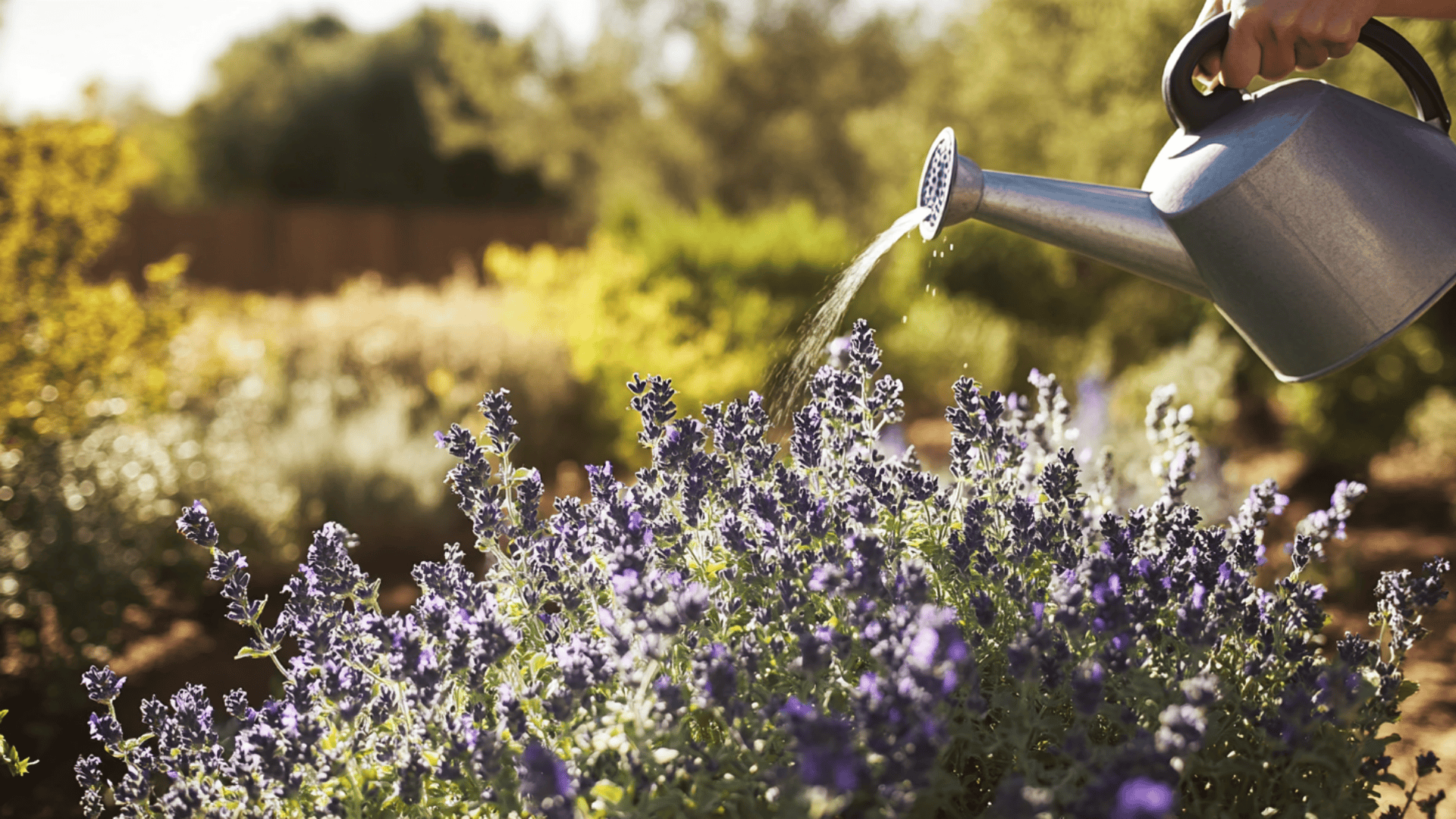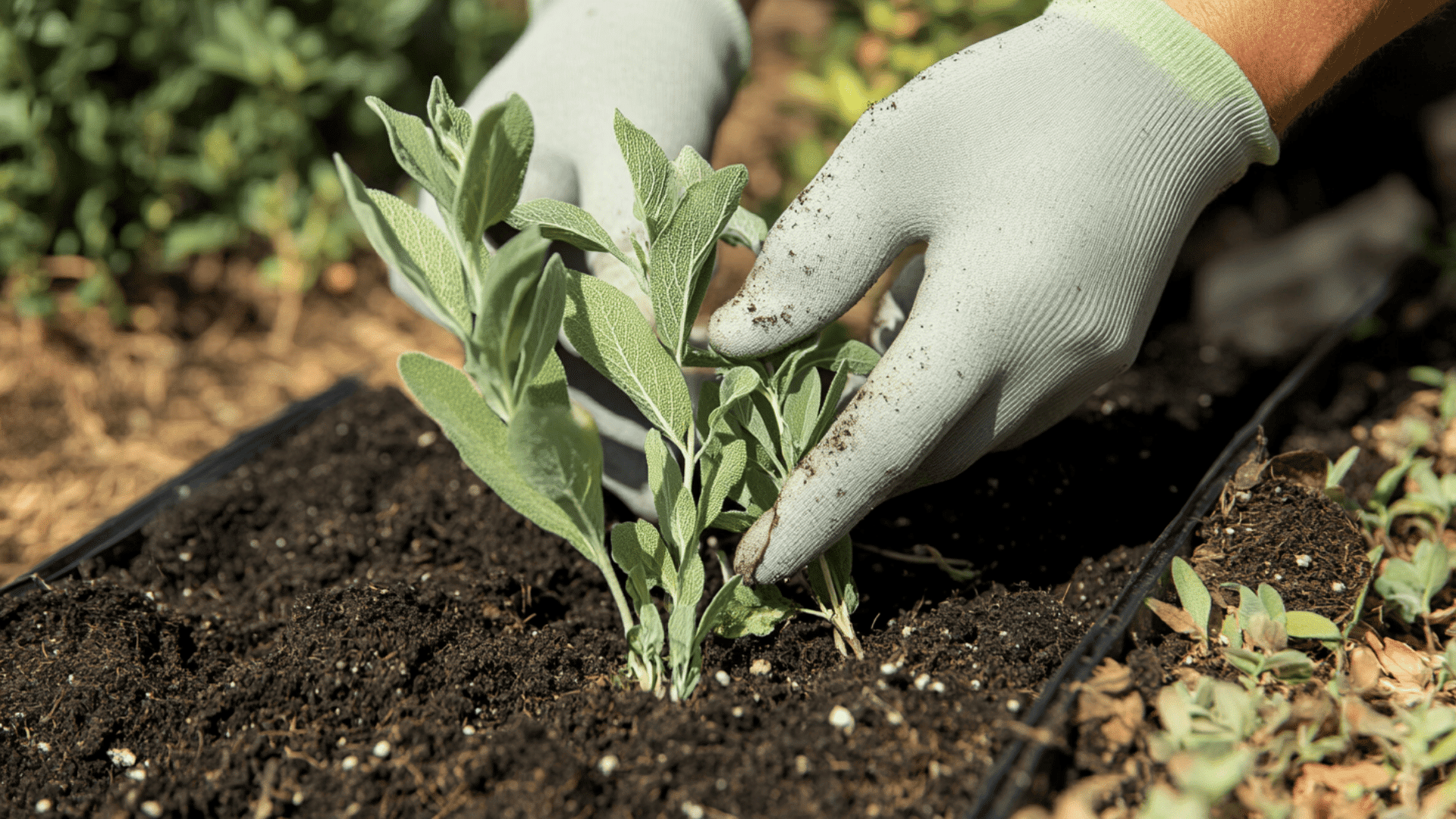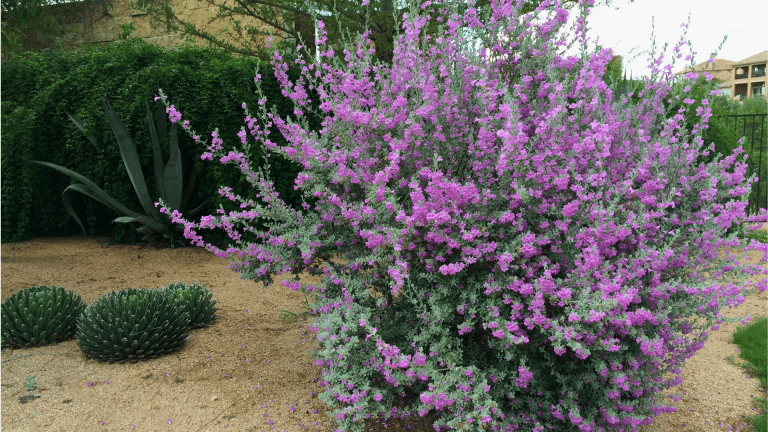Looking for a hardy, low-maintenance plant to brighten your garden? Texas Sage (Leucophyllum frutescens), also known as Cenizo, might be the perfect choice.
Known for its silvery-gray leaves and beautiful purple blooms, it thrives in dry, hot conditions and requires little water once established.
If you’re working with a dry landscape or want a low-care option for your garden, Texas Sage is a great solution.
In this blog, we’ll guide you through everything you need to know about growing and caring for Texas Sage, from planting tips to troubleshooting common issues.
Ready to make your garden thrive with this drought-tolerant shrub? Keep reading to learn more.
What is the Texas Sage Plant?
Texas Sage (Leucophyllum frutescens), also known as Cenizo, is a hardy shrub native to the arid regions of Texas and northern Mexico.
It thrives in dry, rocky soils and is well-suited to these regions’ harsh, hot climates.
Once established, this plant is known for its resilience and ability to endure drought conditions, making it a popular choice for low-water landscapes.
Despite its name, Texas Sage is not related to culinary sage (Salvia officinalis). Instead, it belongs to the Scrophulariaceae family.
It is often called “Cenizo” due to its silvery-gray, evergreen leaves, which give it a striking appearance year-round.
Texas Sage produces beautiful bell-shaped flowers that range from purple to pink. These flowers typically bloom after rainfall, adding a burst of color to the landscape.
The genus name Leucophyllum comes from the Greek words “leuco,” meaning white, and “phyllum,” meaning leaf, referring to its pale foliage.
The species name frutescens indicates its shrubby nature. Texas Sage is a hardy, low-maintenance plant, ideal for xeriscaping and gardens in dry climates.
How to Care for Your Texas Sage

Texas Sage is a low-maintenance plant that thrives in hot, dry climates. Here’s how to keep it healthy.
- Watering Needs: Once established, Texas Sage is drought-tolerant. Water deeply but infrequently, allowing the soil to dry out between waterings. Overwatering can lead to root rot, so let the plant’s soil remain dry.
- Sunlight Requirements: This plant prefers full sun, so make sure it gets at least 6 hours of direct sunlight each day. Full sun encourages the best blooming and overall health.
- Temperature and Humidity: Texas Sage thrives in hot, dry conditions and is ideal for USDA zones 8-11. It can tolerate heat well but may need protection from frost in colder months. It’s not suited for high humidity, as it prefers dry air.
- Soil Types and Fertilizer: Texas Sage prefers well-draining, rocky, or caliche soils. It does not require much fertilization. If desired, use a slow-release, low-nitrogen fertilizer in the spring to support its growth.
Size and Growth of Texas Sage
Texas Sage is a bushy, well-rounded shrub that typically grows between 5-8 feet tall and 4-6 feet wide. Its compact, dense growth makes it an excellent choice for landscaping, providing both structure and beauty.
It has a moderate growth rate, but when given plenty of sunlight and well-draining soil, it can quickly fill out, creating a lush, full appearance.
Regular pruning is essential to keeping your Texas Sage looking its best. Prune it in late winter to shape the plant, remove dead or damaged branches, and encourage fresh, healthy growth.
Proper pruning also ensures better air circulation and enhances the plant’s blooming potential.
Propagation of Texas Sage

Texas Sage can be easily propagated through stem cuttings, which is the most reliable method. Here’s a simple step-by-step process to grow new plants:
- Step 1: Select a healthy stem and cut a 4-6 inch section from the tip of the plant.
- Step 2: Remove the lower leaves from the cutting, leaving just a few at the top. Dip the cut end in rooting hormone to encourage root growth.
- Step 3: Plant the cutting in a pot filled with well-draining soil, ensuring the cut end is buried about an inch deep.
- Step 4: Maintain high humidity around the cutting and place it in a spot with bright, indirect light. This will help the cutting establish roots.
- Step 5: Once the roots have developed, typically after a few weeks, transplant the new plant outdoors where it can grow in the ideal sunlight and soil conditions.
Pet Safety and Toxicity
Texas Sage is completely non-toxic to pets, making it a safe choice for households with animals. You don’t need to worry about harmful effects if your pets come into contact with it.
This makes Texas Sage a great option for families with curious cats or dogs who tend to nibble on plants.
However, while the plant is not toxic, it’s still a good idea to keep it out of reach of pets. Chewing on the leaves, although not harmful, could cause some digestive discomfort for your animals.
Additionally, excessive chewing on the plant could lead to damage, affecting its overall health and appearance.
For the well-being of both your pets and your Texas Sage plant, consider placing it in an area that pets cannot easily access, such as on a high shelf or in a space where they can’t reach it.
Common Problems with Texas Sage

Texas Sage is a hardy plant that is generally pest-resistant. However, it can face some issues, especially if it’s not cared for properly.
Overwatering is one of the most common problems, as it can lead to root rot, which weakens the plant and affects its health.
Yellowing Leaves
- Often caused by overwatering or poor drainage.
- Roots that stay too wet can suffocate and cause yellowing leaves.
- Ensure the soil is well-drained and only water when the soil has dried out.
Flowering Issues
- It blooms best with plenty of direct sunlight.
- Insufficient sunlight can prevent or reduce blooming.
- Ensure the plant gets at least 6 hours of direct sun each day for optimal flowering.
Preventative Care
- Use well-draining soil.
- Avoid overwatering.
- Place the plant in a location that receives full sun.
These steps will help prevent common issues and keep your plant thriving.
Indoor vs. Outdoor Growth of Texas Sage
Texas Sage is best suited for outdoor growth, as it thrives in full sun and well-draining soil. Here’s what you need to know about growing it indoors versus outdoors:
Indoor Conditions
Texas Sage is not recommended for indoor environments due to its space requirements and need for full sun.
The plant needs at least 6 hours of direct sunlight a day, which is difficult to provide indoors without a sunny spot or grow lights.
Outdoor Conditions
Texas Sage is ideal for outdoor landscapes in dry, hot climates, especially in USDA zones 8-11. It’s perfect for xeriscaping or low-water gardens and thrives in well-draining, rocky soil.
Cold Tolerance
Texas Sage is not frost-tolerant. If grown in colder regions, protect the plant from freezing temperatures by bringing it indoors during the winter.
Benefits of the Texas Sage Plant
Texas Sage offers several benefits, making it a great choice for gardens and landscapes:
- Aesthetic: Improves landscapes with its attractive silvery-gray foliage and vibrant purple or pink blooms, adding color and texture to outdoor spaces.
- Drought-Tolerant: It is ideal for water-wise gardens because it thrives with minimal water, making it perfect for dry climates or xeriscaping.
- Pollinator-Friendly: Attracts bees, butterflies, and hummingbirds, making it a valuable addition to gardens that support local pollinators.
- Low Maintenance: Once established, Texas Sage requires very little care, making it a low-maintenance plant that fits well into busy gardens or landscapes.
- Privacy: Due to its dense growth, it works well as a natural privacy screen or hedge, offering both aesthetic and functional benefits to your garden.
Conclusion
Texas Sage is a beautiful, low-maintenance plant that thrives in dry conditions and offers several benefits, like attracting pollinators and acting as a natural privacy screen.
With its attractive foliage and vibrant blooms, Texas Sage is perfect for water-wise gardens and outdoor landscapes. Once established, caring for it is easy, making it a great addition to any garden.
Ready to add this hardy plant to your space? Bring home a Texas Sage and enjoy its beauty and flexibility.
If you’re looking for more gardening tips and plant care advice, be sure to check out the other blogs on our website!














One Response
Hi Randy,
I have a Texas purple sage in a pot. It is now ~2ft tall. When is the best time to plant it in the yard? And, how deep/large of a hole do I need to plant it in?